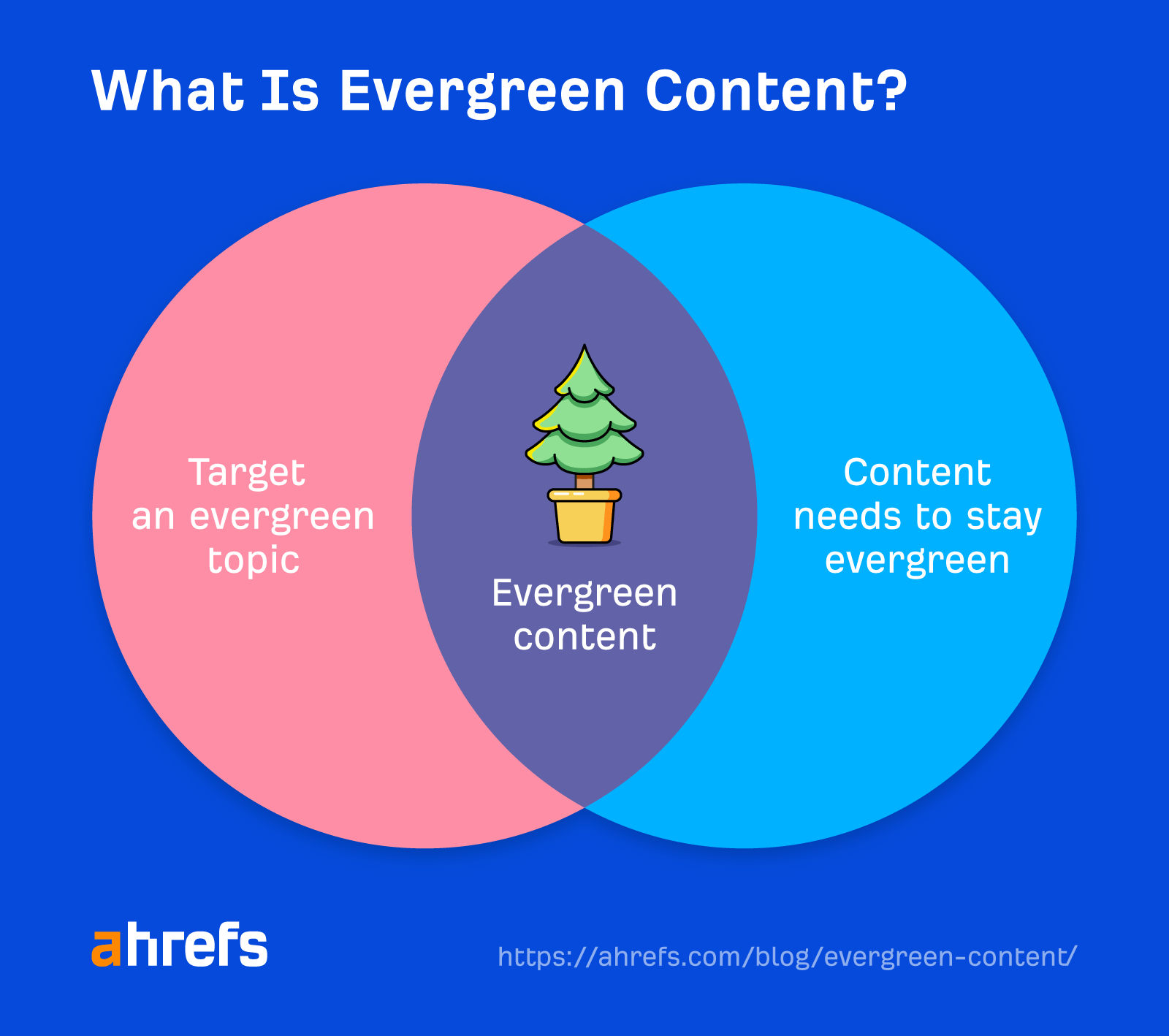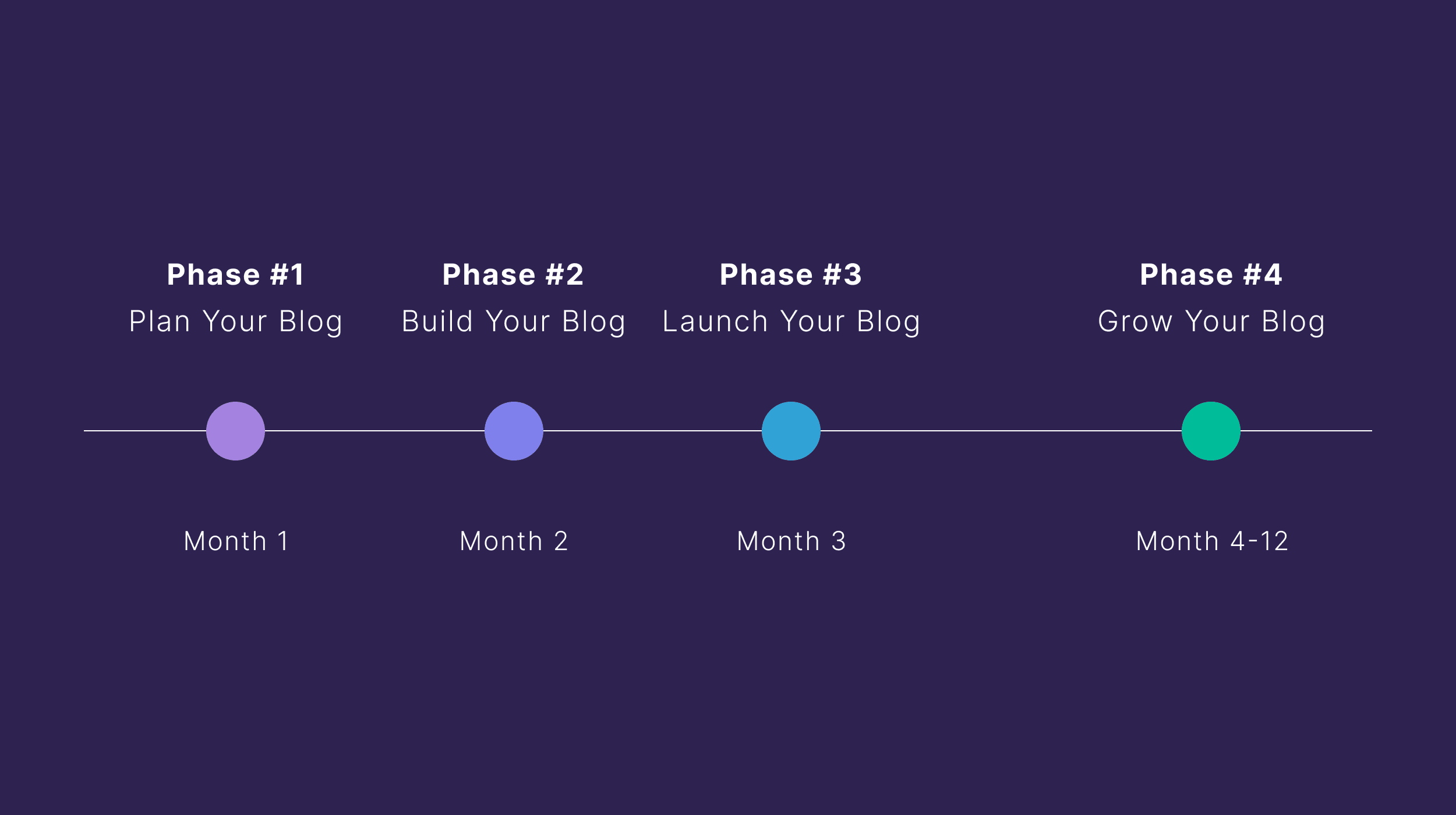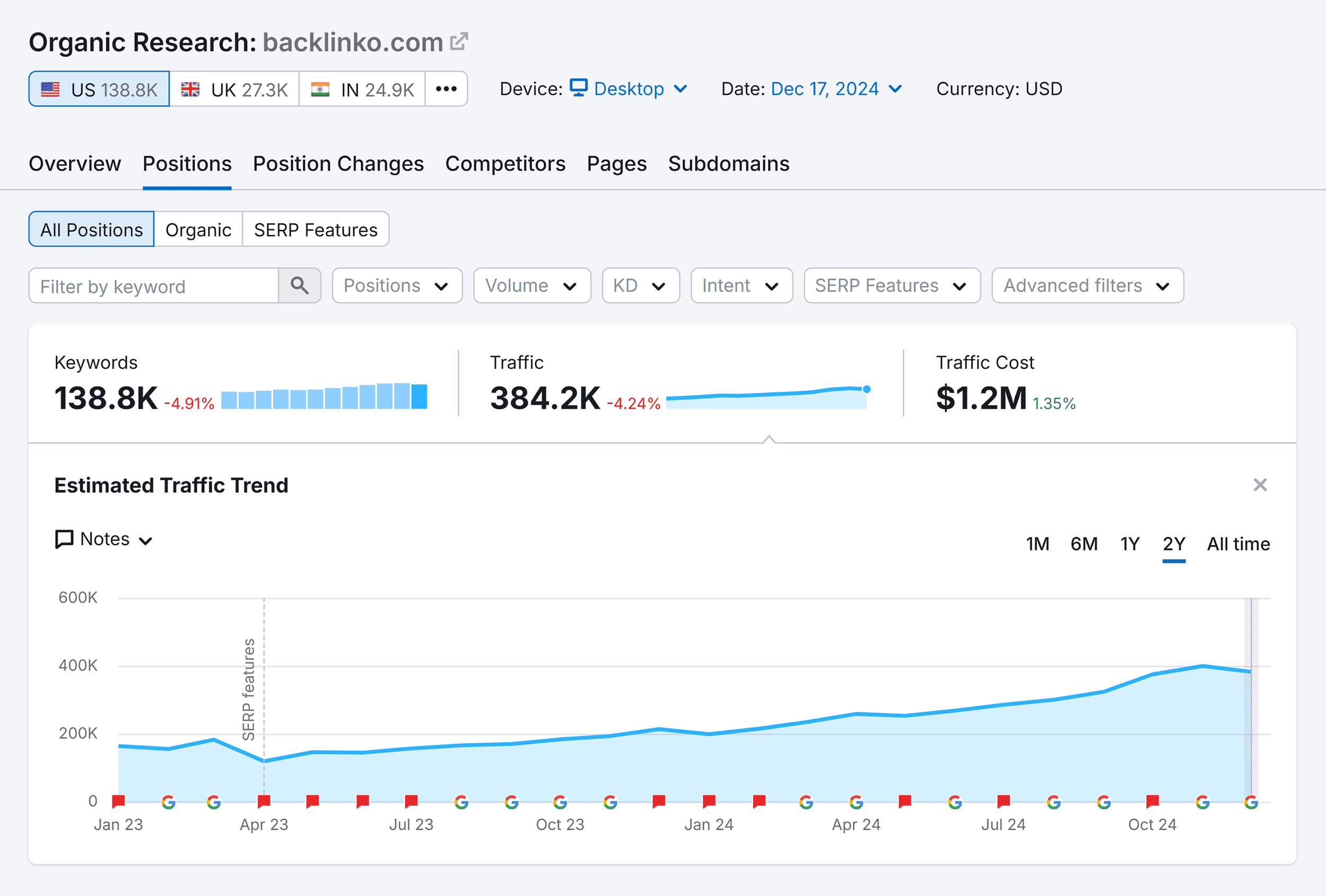Evergreen content is content that is always relevant.
For content to be evergreen, it needs to match two criteria:
It needs to target an evergreen topic
Evergreen topics are topics with consistent interest over time.
For example, as long as formal wear is required, “how to tie a tie” will be an evergreen topic for the foreseeable future. On the other hand, “Liverpool F.C. in Singapore” is a non-evergreen topic, since it only occurs occasionally (2009, 2022, 2023).
It needs to stay evergreen
The content needs to continue to be relevant long past its publication date.
For example, this video on how to tie a tie was published in 2012. But the process remains unchanged, so there’s no need to update it. Google acknowledges it too, which is why this video still ranks high:

This is why writing about soccer scores isn’t evergreen content. The topic “soccer scores” may be an evergreen topic, but the content won’t be (soccer scores change week by week).
Hidden within the criteria is the “formula” behind how to create evergreen content. Namely, find timeless topics and create content that stays relevant.
Here’s how:
1. Find evergreen topics
Finding evergreen topics is all about staying away from time-sensitive topics and focusing on topics that are searched for consistently on Google.
Here’s how to find these topics:
- Go to Ahrefs’ Keywords Explorer
- Enter a relevant keyword
- Go to the Matching terms report

If a topic is evergreen, it shouldn’t be on a declining trend. So you’ll want to look at the “trends” graph to see if a topic is gaining or losing popularity over time.
For example, the topic “bitcoin mining” has a high Traffic Potential but is declining in popularity:

You can cross-reference these trends with Google Trends too:

Further reading
2. Create evergreen content
Creating evergreen content means making something that will be relevant no matter when it is. It should show Google that it deserves to be the best result today, tomorrow, and many months from now.
How do you do that?
Match search intent
Search intent is the why behind a search query. Google wants to rank only relevant content, so it seeks to understand why searchers are searching. So if you want to rank high, you’ll have to match search intent.
To identify search intent, look at the top-ranking results for your target keyword. For example, if we look at the top results for “best wireless headphones,” we see that most people want to see a list of the best wireless headphones this year:

So if you want to rank for this keyword, it’s likely you have to follow suit.
Further reading
Cover important subtopics
If the top-ranking pages cover similar subtopics, they’re likely important and what searchers expect to see.
We can look at the common keyword rankings among the top-ranking pages to find out what these subtopics are. Here’s how to find them:
- Go to Keywords Explorer
- Enter a relevant keyword
- Scroll down to the SERP overview
- Check up to three top-ranking pages
- Click Open in and select Content gap

This opens the Content Gap report, which will show you all the common keywords these pages rank for. Look through the report and see if there are any subtopics you should cover. For example, if we’re writing about pistol squats, these seem like potential subtopics:
- Pistol squat progression
- How to do a pistol squat
- What is a pistol squat
- Pistol box squat
- How hard is a pistol squat

Offer a unique point of view or solution
If your content is exactly the same as everyone else’s, then there’s no incentive for the reader to read yours over the rest. They could simply click any post in the search results and be done with it.
You want your content to stand out. To do that, you need to offer a unique opinion or solution—one that other pieces of content do not have.
How do you do that? The best way is to write from personal experience. Everyone’s lived experience is different and, therefore, you’ll be able to provide a point of view that others do not have.
For example, when I wrote about creating an SEO content strategy, I didn’t provide a generic template. Instead, I wrote about it from our company’s personal experience in creating and implementing one.

Following the process above will get you 90% of the way there. But I want to share a few more tips that’ll help you create better evergreen content.
Avoid angles with a short lifespan
Some content marketers love referencing pop culture in their articles. For example, here’s an article about what content marketers can learn from the Marvel Cinematic Universe.

In this case, the topic is evergreen. But the content isn’t. The article is forgettable once the MCU hype dies, which it has:

If your goal is to create evergreen content, avoid trendy angles or references.
Avoid using language with a short lifespan
When and if possible, it may make sense to avoid words and phrases that will date your content:
- Earlier this year
- Last month
- Yesterday
- 202X
Note that this isn’t a cut-and-dry rule. If freshness is important, then ignore this.
Refresh your content periodically
Although the ideal end state is for your content to stay relevant continuously, sometimes things do change. New research, thinking, and processes may appear in your industry or for that topic.
When that happens, you want to update your content. The good news is these updates can help boost your page’s search traffic.
For example, the topic “free seo tools” is an evergreen topic. And generally speaking, free SEO tools don’t change much. However, no one expected large language models to progress so far, so fast. So we had to update our post on free SEO tools to include ChatGPT.
This resulted in a corresponding spike in search traffic:

Further reading
Build links to your content
Links are an important Google ranking factor. Pages with links tend to rank higher. So if you want to rank higher on Google, you need links.
Check the Keyword Difficulty (KD) in Ahrefs’ Keywords Explorer to estimate how many backlinks you need for your topic:

Here are some resources to help you build more links to your site:
Even if they were published a while ago, evergreen content can still generate a ton of traffic. We’ve seen that with the video on how to tie a tie. But that’s not the only example around.
To find more examples, I turned to our Content Explorer. These three examples came from filtering over 13.8 billion pages in English by organic traffic.
1. Natasha’s Kitchen – Meatloaf Recipe
I’m not a fan of meatloaf, but many people are. So even though the recipe was published in 2019, it is still a big hit and generates an estimated 1.1 million monthly search visits:


2. Builtin – What Is Blockchain Technology?
I’m no crypto expert, but I’m fairly certain blockchain technology has not drastically changed from the original. That’s why this post still generates an estimated 20,400 monthly search visits even though it was published in 2020:

3. 16Personalities – INTJ
Even though the Myers–Briggs Type Indicator (MBTI) is classified as pseudoscience, it still remains popular as a personality test (especially in South Korea).
This probably explains why this post on one of the personality types still generates an estimated 176,000 monthly search visits despite being published in 2015:

Here are some commonly asked questions about evergreen content:
Why is evergreen content important?
Every time you publish content about a trending topic, you get an initial burst of traffic. Over time, as interest wanes, traffic also disappears.

You have to keep publishing in order to get traffic.
But if you’re creating evergreen content around evergreen topics, you’ll be able to attract consistent organic traffic without worrying about drastic declines after a week or two.
What isn’t evergreen content?
Non-evergreen content is content that targets a fad and goes out of date fast. Examples include:
- News or posts about breaking news.
- Current trends or fads.
- Content that targets one-off events.
What are popular evergreen content formats?
The content format you select depends on the evergreen topic you’re targeting. But you’ll find that many times, it’s a variation of:
- Guides
- How-tos
- Listicles
- Tools
- Reviews
- Glossaries
- Case studies
Final thoughts
Jeff Bezos once said, “Focus on things that don’t change.”
These are your evergreen topics.
If you want consistent traffic coming to your blog over time, you should target evergreen topics. Then work to maintain their evergreen status by republishing and repromoting them.
Any questions or comments? Let me know on Twitter.
Content Copyrights Belong to The Author. All Rights Reserved.
We're A Dallas Digital Marketing Agency That is Experts At Social Media Marketing, Website Design and Emarketing and Promotion.



